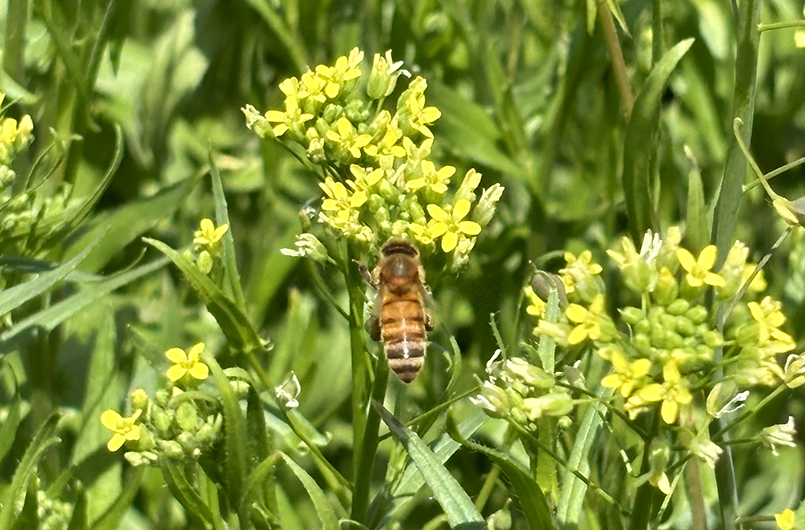
A recently released study from USDA shows the positive impact that sustainable agriculture practices can have to support pollinator health.
More than 75% of food crops rely on animal pollination. Yet, a global decline in pollinator populations poses a threat to crop production and food security, as the demand for pollinators has exceeded the supply of wild pollinators.
Semi-natural habitats – or areas that have been altered by human activity but have natural features to promote animal life – have helped support pollinator populations, according to the study. Conducted by Virginia Tech and the USDA, the study examined all the NRCS conservation practices that support pollinators – including conservation cover, cover crops, windbreak/shelter establishment, creating field borders, and wildlife habitat plantings, to name a few.
Experts quantified the effectiveness of these conservation practices in creating or restoring semi-natural habitats deemed useful for pollinators, including pasture, hay, grass, shrubland, forest land, and wetlands. Findings concluded that habitat established under NRCS conservation practices provides more benefit for pollinators than habitat established without those conservation practices – crediting technical assistance as a differentiating factor.
Takeaways for Sustainability Programs
For many of the programs AgSpire has helped design and is currently implementing, these NRCS conservation practices are core to the progress we are seeing. Yet, as the study indicated, establishing habitat alone doesn’t maximize benefit. Instead, carefully crafting programs alongside technical expertise during implementation contribute to greater success.
Our team shares insight on three key considerations for program design:
1.) Understand the co-benefits of practices
In this video, Senior Conservation Agronomist and a NRCS-certified Technical Service Provider Derek Ver Helst explains how many of the practices common to sustainability programs also present co-benefits, including pollinator health. While cover crops or diverse crop rotations might be selected for their soil health and GHG benefit, they also provide longer duration and greater diversity of pollen availability to support pollinating insects.
For example, as part of the Covering America from Coast to Coast program, Derek worked with a farmer to grow winter camelina, a common species in cover crop mixes, pictured below. As the only flowering field in early spring when many other fields laid fallow, bees could swarm the camelina, finding much needed food.
Understanding this intersection of benefits to entire ecosystems allows programs to make progress toward multiple goals and metrics.

2.) Determine impact by region
Localizing strategies to address the challenges and opportunities for that region helps improve effectiveness in implementation and the resulting impact.
Conservation practices nationwide can benefit pollinators. Yet, in locations where there is already an existing semi-natural habitat will prove to be more beneficial, according to the USDA study. Adding more habitat or improving management techniques around existing semi-natural habitat will result in greater net-benefit.
Additionally, there are certain regions in the United States where the demand for pollinators by pollination-dependent crops is expected to be higher than the supply of pollinators due to recent losses in habitats and projected future losses – making them critical targets for interventions.
3.) Measure net benefit
Measuring impact and establishing key indicators is important for any program. While there is not wide-spread alignment on standards, protocols, and market infrastructure, themes are emerging in the industry that can guide program design for biodiversity and pollinator health.
“We are seeing a prioritization of 5 main metrics: species richness, species abundance, species threat, species evenness, and ecosystem integrity,” explained Zach Pinto, AgSpire’s Director of Carbon and Ecosystem Service Markets. “They are prioritizing them in the context of a bigger picture indicator known as biodiversity net gain – essentially, if the project is making measurably positive impact on biodiversity, compared to a baseline.”
Read More >>>